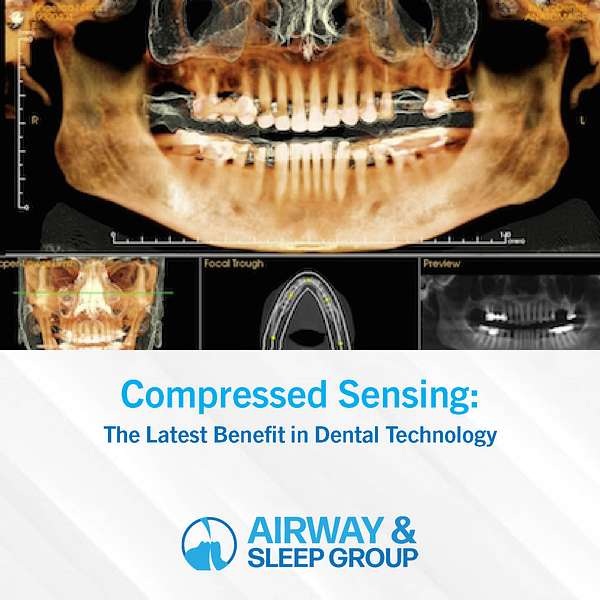
Airway and Sleep Group Podcast
Airway and Sleep Group Podcast
Compressed Sensing: The Latest Benefit in Dental Technology
Patients don’t need to understand the latest in dental technology. What is important are the benefits it offers. Take compressed sensing, for example. With this technology, it is possible to increase image accuracy and reduce radiation doses by more than “an order of magnitude” without loss of useful information for radiotherapy.
Understanding CT and CBCT
To understand compressed sensing, we must first understand CBCT. CBCT refers to circular “cone-beam computed tomography.” X-ray computed tomography (CT) is widely used to provide dental professionals with a scan of the bones, muscles, blood vessels and organs, or for fluid or tissue biopsies, normally to provide necessary information for diagnosis, treatment or surgery. The “CB” in CBCT refers to a circular “cone-beam,” a technology that enables dental professionals to take highly-accurate 3D images. The CBCT is one of the most recent diagnostic imaging modalities with the benefits of better diagnostics and lower radiation. (See: Why CBCT is the Best Tool for Orofacial Diagnostics.)
What is Compressed Sensing?
In a CBCT scan, it can sometimes be difficult to reconstruct the scanned images exactly, “due mainly to imperfections in the imaging process resulting from detector resolution, noise, X-ray tube’s focal spot, and reconstruction procedure,” explains a study offered by the National Library of Medicine. Images could end up slightly blurred. Compressed sensing is a processing technique that allows for efficient acquisition and reconstruction of a signal, and the image can be recovered from far fewer samples. The blurring issue can be solved or reduced significantly, resulting in reconstruction of the highest-quality CBCT images.
“Compressed sensing is a technique for acquiring and reconstructing a signal that is known to be sparse or compressible,” describe the authors of an article published in the American Association of Physicists in Medicine. “It shows that super-resolved signals and images can be reconstructed from far fewer data/measurements than what is usually considered necessary.”
As an interesting side note, compressed sensing has also been used in facial recognition applications.
Airway & Sleep Group’s Investment in Compressed Sensing Technology Benefits You
If you have an issue with your dental health, you want a dental professional offering the latest technology—like compressed sensing. The speed and accuracy of a correct diagnosis can be critical to your treatment and recovery.
“Our office distinguishes itself from others in the market due to our heavy investment in the latest technology with the highest standards in imaging,” explains Dr. Liliana Calkins of Airway and Sleep Group. “By partnering with companies of the highest quality demands, our patients benefit from their breakthrough technologies. Not all dental offices are the same, or invest for their patients at the level we do.”
Dr. Liliana Calkins is a partner of the Airway and Sleep Group, Facial and Airway Development Center in Reston, Virginia. She is dedicated to providing patients with the exceptional dental, sleep and orthodontic care using the latest innovations in medical technology.
Contact Airway and Sleep Group at 571-244-7329 to request an appointment or virtual consultation.